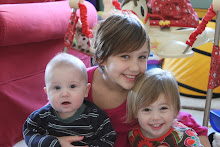The egg is such a miraculous food. It is both delicious and nutritious, and eggs are especially great for growing babies and toddlers. They contain the highest quality of protein called biological value protein and are loaded with good fats. Eggs are also high in riboflavin, vitamin B12, vitamin A, and folate. They will fill a toddler up and keep him or her going strong all morning.
But, even more importantly, the yolk contains nutrients that are important to the brain and eye. Carotenoids, which are more readily available in egg yolk than in plant sources, protect the human macula from oxidative stress and ultraviolet light. Choline, a neurotransmitter and a key component of many fat-containing structures in cell membranes, abounds in egg yolks. Choline provides flexibility and integrity to fat-like molecules that makes up a large percentage of the brain's mass, making choline critical for brain function and health. As a neurotransmitter, choline carries messages from nerve to nerve, and is the principal chemical messager between muscles and nerves.
When choosing eggs at the grocery store for baby, look for free range, vegetarian eggs that come from chickens that have not been fed antibiotics or hormones. If you would like to feed your baby or toddler runny yolks, but are concerned about salmonella, looks for pasteurized eggs at the grocery store. They are pasteurized for food safety, yet still in a raw state, meaning that the yolk and albumen are runny. No matter which egg you choose, the albumen, or white of the egg, should always be cooked. The whites contain a protein called avidin. It binds the eggs' biotin (a water-soluble vitamin) thereby preventing it from absorption. Cooking the egg or egg whites changes avidin, making it easier to digest and unable to interfere with biotin absorption.
Baby's Age: around 11 months and up
Consistency: runny egg on crunchy toast
Fried Egg for Baby and Me
1 smidgen of butter
1 large egg
1 slice of white or wheat bread, toasted
In a small frying pan over medium heat, melt the smidgen of butter. Crack the egg into the pan and cover it with a lid. A glass lid works well, so you can keep an eye on the egg's progress. When the white is cooked, move egg to a plate and cut the white part off. Place the intact yolk on the toast and break the yolk so it runs onto the toast. Cut the toast into bite-sized pieces for baby.
At around 11 months, my daughter can eat about 2/3 of the toast with egg yolk. I eat the rest with the whites!
Subscribe to:
Post Comments (Atom)

2 comments:
Since discovering them, I don't use anything else but the in-shell pasteurized eggs. I buy the davidson's brand and think they're wonderful.
I would strongly recommend using pasteurized eggs in this recipe as you mentioned. Infants immune systems are still developing and are not be able to handle salmonella.
Post a Comment